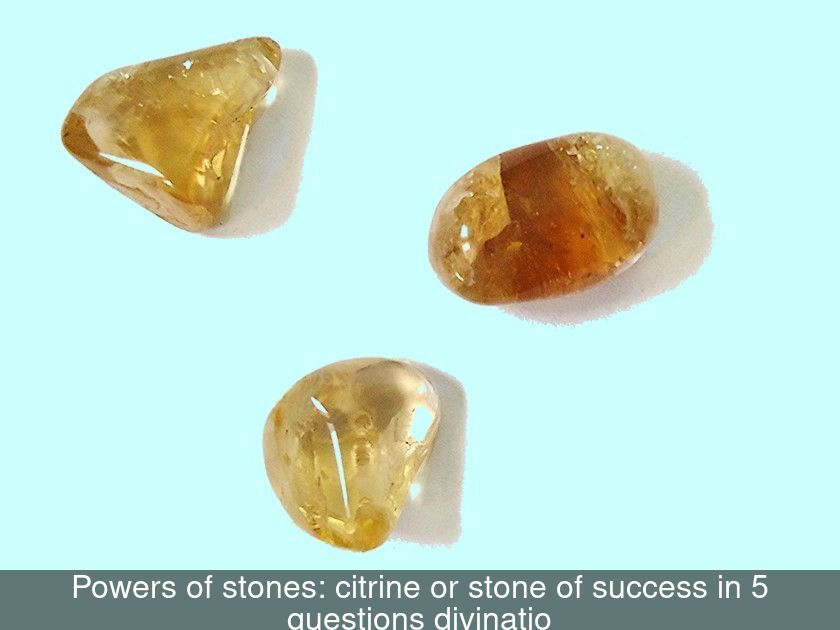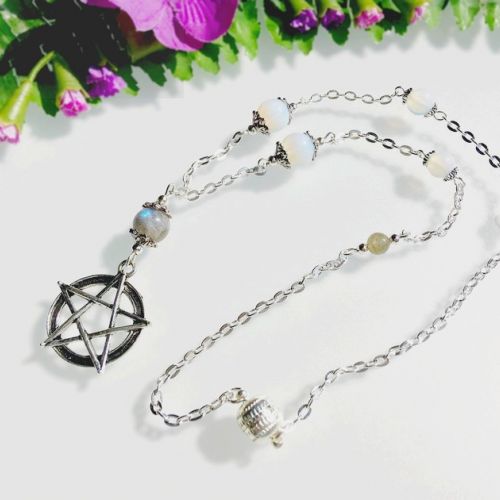Powers Of Stones: Citrine Or Stone Of Success In 5 Questions
Citrine is an essential stone for anyone practicing lithotherapy and believing in the powers of stones. This fine stone from the quartz family is recognized by its bright yellow color. We invite you to discover its characteristics, virtues, and benefits through 5 questions.
1- What is citrine?
Citrine is a yellow-colored stone, whose name comes from the Latin citrus meaning lemon. Although their shades are similar, this gemstone should not be confused with topaz.
Unlike topaz, it belongs to the quartz family, alongside amethyst, white quartz, rose quartz, and smoky quartz. This is why it is sometimes referred to as yellow hyaline quartz.
Its more or less pronounced yellow color is due to the presence of traces of iron that have bonded with the quartz during its formation. Its bright pale yellow color evokes the sun, good mood, and vitality.
2- What are the origins of citrine?
Natural citrine forms in the same way as other quartz, from silicon dioxide and iron. It can be found in deposits all over the world, particularly in Scotland, Brazil, Congo, Madagascar, and certain states in the United States.
It is also important to know that some citrines sold commercially are not natural citrines, but thermally treated amethysts. When an amethyst is heated to very high temperatures, beyond 450°C, it takes on a darker golden or amber color than that of natural citrines.
3- What are the virtues of citrine for health?
In yoga and Ayurveda, citrine is associated with the solar plexus chakra, which is yellow in color. This chakra is said to govern the digestive system, particularly the stomach.
That is why this gemstone is attributed with properties against nausea, vomiting, heartburn, and also diabetes.
More broadly, lithotherapy recommends the positive vibrations of this stone to provide energy, regenerate tissues, and facilitate natural healing processes. Citrines are therefore particularly indicated during convalescence.
4- What are the virtues of citrine for morale?
On a psychic level, the solar plexus chakra is associated with self-confidence, inner strength, creativity, and concentration. Citrine, whose color corresponds to this chakra, is known to stimulate all these qualities.
In lithotherapy, this gemstone is used to bring joy and a positive mood to those who are feeling down. Thanks to its bright hue, this stone dispels negative thoughts and anxiety.
It provides energy to those who wear it, and could even bring them abundance and luck, according to an ancient belief. Indeed, citrines were already considered lucky stones in Ancient Greece. They were used to ward off the evil eye and to protect against reptiles.
5- How to benefit from the properties of citrine?
To enjoy the benefits of citrine on health and morale, it is recommended to wear this stone as jewelry. On bracelets, this stone is sometimes paired with sunstone to boost optimism and joy of living.
You can also place a citrine stone on your solar plexus during a meditation session to activate energy in this chakra and feel more confident and joyful.
If you wish to use this gemstone to attract abundance and money, simply place a small tumbled stone in your bag or wallet.
This stone is a great way to bring cheerfulness and positive energy into your home. It is advisable to place this stone in living spaces, particularly in shared areas like the living room.
Since this stone is favorable for creativity, concentration, and motivation, it is also interesting to put it on your desk when you are a student preparing for an exam. Now that you know all its properties, you better understand why citrine is sometimes called the stone of success!



